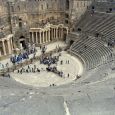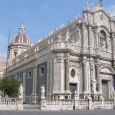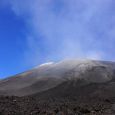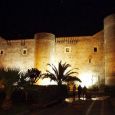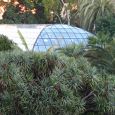Catania
Advertisement
By Air
The International Airport of Catania (CTA) is situated five miles from the city centre and offers flights to most major European destinations. The flight time to London Gatwick International Airport is approximately 3 hours 30 minutes.
Terminal facilities include a restaurant, bar, self-service caf and a Sicilian pastry shop. An exchange bureau, newsagents and other small shops are also available. Short-term and long-term parking is provided in the nearby car parks.
The Alibus runs every 20 minutes from 05:00 to midnight. It connects to the central Piazza Stesicoro on via Etnea and to Stazione Centrale. Alternatively, taxis can be hired for a fixed fee - the rates being slightly higher during the night.
By Bus
Long-distance buses link Rome and Naples to Catania. There are three main bus companies operating on Sicily - SAIS, AST and Interbus. They provide an extensive and cheap network, linking most of the towns at least once a day. In Catania, all of the local and regional buses stop at various points in Piazza Giovanni XXIII, across from the train station. Some of the other main stops for the citys buses are Piazza del Duomo, Piazza Stescoro and Piazza Borsellino. Tickets can be purchased from newsagents and tobacco vendors, and they are valid for 60 to 90 minutes from the time stamped. The same outlets also sell a one-day unlimited travel pass, valid on all local AMT bus routes.
By Rail
From Rome, there are some direct trains to Catania via Naples, taking roughly 10 hours. This includes transporting the train onto a ferry at the Strait of Messina, crossing the Strait and unloading it in Sicily. Catania is connected by train to all the major destinations in Sicily, such as Taormina, Palermo and Siracusa. Journeys can often be delayed and some stations are a considerable distance from the nearest town.
By Ferry
Sicily is well connected via sea links to the mainland. The major route is from Villa San Giovanni in Calabria, the last city approached before the ferry trip over to Messina in eastern Sicily. There are at least hourly ferries to and from Villa San Giovanni and also several hydrofoils operating from Reggio di Calabria.
Advertisement
Piazza del Duomo
The main square in the city is both attractive and lively, and is conveniently located near to many of the tourist attractions. It contains the 18th century Elephant Fountain, which boasts a distinctive Egyptian obelisk on its back. It is made from lava, which is considered to be the symbol of the city. The square was rebuilt during the 18th century and is dominated by imposing Baroque buildings. The finest of these is probably the Municipio on the northern side of the piazza.
Cathedral
This 12th century cathedral is located right in the heart of the city and is perched above the surrounding buildings. It is best known as the resting place of the city's patron saint, Saint Agatha, and the tomb of the famous composer, Vincenzo Bellini. The cathedral was rebuilt following the eruption that destroyed much of the city, and without doubt its most striking feature is the huge dome designed by Filippo Brunelleschi. A beautiful view of the city can be seen by climbing the steps between the two shells of the cupola
Mount Etna
One of the most popular attractions on Sicily, Etna is the oldest recorded active volcano in the world. Standing at 3,330 metres high, its constant rumblings and unpredictable nature pose a danger for those living nearby. You don't need to be a mountaineer to climb the volcano, as there are several relatively easy options for visitors. There are trekking excursions and mountain bike trips that follow rough paths to the top of the crater. From here, you will have stunning views over Sicily and the Aeolian Islands. For the less adventurous, the tour on the old Circumetnea train is recommended, as it takes you to some beautiful medieval villages at the foot of the volcano.
Roman Amphitheatre
A large amphitheatre can be found close to the commercial centre in Piazza Stesicoro (at the intersection of via Etnea and Corso Sicilia). It dates back to the 2nd century BC and is considered only second to that of the Colosseum in Rome. It is located mostly below ground and only a small part of it remains visible. This huge complex could seat around 16,000 spectators and was 31 metres high. The lower corridor is well preserved and has a vast network of underground passages and alcoves. The variety of building materials used (basalt, calcareous stone and red bricks), suggests a number of architects were employed during the construction.
Botanical Gardens
These beautiful gardens date back to 1858 and occupy an area of 16,000 square metres, with a number of distinct sectors and themes. There are also some neo-classical buildings that are used as greenhouses, containing many rare and exotic plants. Another section features Sicily's various flora, grown on volcanic soil.
Ursino Castle
This huge castle was built between 1239 and 1250 by order of Frederick II of Hohenstaufen. It originally stood high above the sea, but due to the eruption of Mount Etna in 1669 and the subsequent lava flow, it is now hundreds of metres from the coast. It is the only medieval building that survived the destruction and is still almost intact today. Amongst its many uses, it has been a royal residence, a prison and is now currently the home of the Civic Museum, which houses a collection of paintings, sculptures and ceramics from various eras.
Information not available
January - February -> 7(°C) - Winter
July - August -> 31(°C) - Summer
Advertisement

